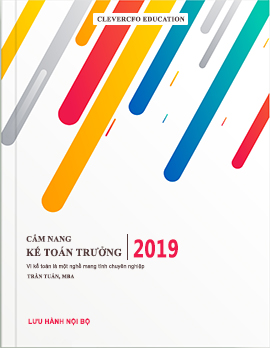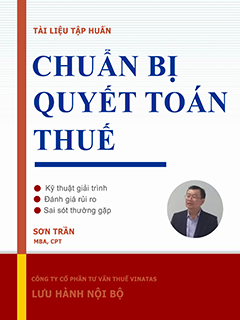Accounting Dictionary – 45 - LEG
KAIZEN COSTING means "improvements in small steps" (i.e., continuous improvement). It was developed in Japan by Yashuhiro Monden. Kaizen Costing is applied to product that it already under production.
KEOGH is a pension plan in the United States that allows a business to contribute a portion of profits into a tax-sheltered account.
KEYNESIAN GROWTH MODELS are models in which a long run growth path for an economy is traced out by the relations between saving, investing and the level of output.
KEYNESIAN MACROECONOMICS is the theory that shows how a market-based capitalist economy may reach equilibrium with large scale unemployment and how government spending may be used to raise it out of this to a new equilibrium at the full-employment level of output.
KITING, when used in the context of banking, refers to the practice of depositing and drawing checks at two or more banks and taking advantage of the time it takes for the second bank to collect funds from the first bank. Can also refer to illegally increasing the face value of a check by changing the printed amount of the check. When used in the context of securities, it refers to the manipulation and inflation of stock prices.
LABOR INTENSIVE is used to describe industries or sectors of the economy that relies relatively heavily on inputs of labor, usually relative to capital but sometimes to human capital or skilled labor, compared to other industries or sectors.
LAG TIME is the period of time between two closely related events, phenomena, etc., as between stimulus and response or between cause and effect: a time-lag between the declaration of war and full war production.
LAND, in terms of accounting, is the value of real estate less the value of improvements, e.g. buildings.
LARGE-CAP is a stock with a level of capitalization of at least $5 billion market value.
LBO see LEVERAGED BUY-OUT.
LCL see LESS THAN CONTAINER LOAD.
LCM is Lower of Cost or Market.
LCM RULE is an abbreviation for lower-of-cost-or-market rule. LCM requires that an asset be reported on the financial statements at the lower of purchase cost or market value.
LEAD-TIME is the time between the initial stage of a project or policy and the appearance of results, for example, the long lead-time in oil production because of the need for new field exploration and drilling.
LEASEHOLD IMPROVEMENTS are those repairs and / or improvements, usually prior to occupancy, made to a leased facility by the lessee. The cost is then added to fixed assets and amortized over the life of the lease.
LEASE RATE FACTOR is the periodic lease or rental payment expressed as a percentage (or decimal equivalent) of equipment cost. Used to calculate payments given the cost of equipment (e.g. A lease rate factor of 0360 on an equipment cost of $5,000.00 requires a monthly payment of $180.00 (0360x$5,000.00=$180.00).
LEDGER is a book of accounts in which data from transactions recorded in journals are posted and thereby classified and summarized.
LEGAL ENTITY is a person or organization that has the legal standing to enter into contracts and may be sued for failure to perform as agreed in the contract, e.g., a child under legal age is not a legal entity, while a corporation is a legal entity since it is a person in the eyes of the law.
LEGITIMACY THEORY posits that businesses are bound by the social contract in which the firms agree to perform various socially desired actions in return for approval of its objectives and other rewards, and this ultimately guarantees its continued existence.
KAIZEN COSTING means "improvements in small steps" (i.e., continuous improvement). It was developed in Japan by Yashuhiro Monden. Kaizen Costing is applied to product that it already under production.
KEOGH is a pension plan in the United States that allows a business to contribute a portion of profits into a tax-sheltered account.
KEYNESIAN GROWTH MODELS are models in which a long run growth path for an economy is traced out by the relations between saving, investing and the level of output.
KEYNESIAN MACROECONOMICS is the theory that shows how a market-based capitalist economy may reach equilibrium with large scale unemployment and how government spending may be used to raise it out of this to a new equilibrium at the full-employment level of output.
KITING, when used in the context of banking, refers to the practice of depositing and drawing checks at two or more banks and taking advantage of the time it takes for the second bank to collect funds from the first bank. Can also refer to illegally increasing the face value of a check by changing the printed amount of the check. When used in the context of securities, it refers to the manipulation and inflation of stock prices.
LABOR INTENSIVE is used to describe industries or sectors of the economy that relies relatively heavily on inputs of labor, usually relative to capital but sometimes to human capital or skilled labor, compared to other industries or sectors.
LAG TIME is the period of time between two closely related events, phenomena, etc., as between stimulus and response or between cause and effect: a time-lag between the declaration of war and full war production.
LAND, in terms of accounting, is the value of real estate less the value of improvements, e.g. buildings.
LARGE-CAP is a stock with a level of capitalization of at least $5 billion market value.
LBO see LEVERAGED BUY-OUT.
LCL see LESS THAN CONTAINER LOAD.
LCM is Lower of Cost or Market.
LCM RULE is an abbreviation for lower-of-cost-or-market rule. LCM requires that an asset be reported on the financial statements at the lower of purchase cost or market value.
LEAD-TIME is the time between the initial stage of a project or policy and the appearance of results, for example, the long lead-time in oil production because of the need for new field exploration and drilling.
LEASEHOLD IMPROVEMENTS are those repairs and / or improvements, usually prior to occupancy, made to a leased facility by the lessee. The cost is then added to fixed assets and amortized over the life of the lease.
LEASE RATE FACTOR is the periodic lease or rental payment expressed as a percentage (or decimal equivalent) of equipment cost. Used to calculate payments given the cost of equipment (e.g. A lease rate factor of 0360 on an equipment cost of $5,000.00 requires a monthly payment of $180.00 (0360x$5,000.00=$180.00).
LEDGER is a book of accounts in which data from transactions recorded in journals are posted and thereby classified and summarized.
LEGAL ENTITY is a person or organization that has the legal standing to enter into contracts and may be sued for failure to perform as agreed in the contract, e.g., a child under legal age is not a legal entity, while a corporation is a legal entity since it is a person in the eyes of the law.
LEGITIMACY THEORY posits that businesses are bound by the social contract in which the firms agree to perform various socially desired actions in return for approval of its objectives and other rewards, and this ultimately guarantees its continued existence.









